13 November 2020
for Madrid Nuevo Norte
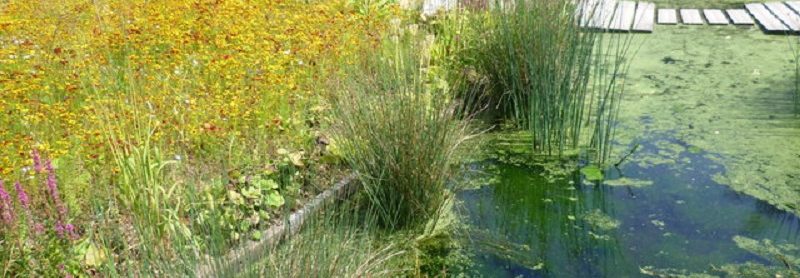
Water is a precious commodity in our geographical context, and it will likely become even more scarce in the coming decades due to climate change. Even countries and regions in which water has historically abounded are expected to see their cycle of regular rains disrupted, with increasingly drier conditions. The international community, therefore, has sounded the alarm on the need to rethink the existing water management model and consumption patterns. Cities around the world have embraced the need for efficiently managing this precious resource.
Pioneering strategies are being implemented in various countries across the world to mitigate the effects of global change. Initiatives that, on their face, appear logical, and even obvious, have not been developed on a large scale until recently. These initiatives range from recycling bathwater (the so-called “grey water”) as flush water to storing and reusing rainwater for irrigation or other uses. A variety of actions could help cities consume less water more sustainably if they were broadly implemented.
Over the centuries, cities have replaced the natural land cover, which gradually percolated rainwater into underground aquifers, with pavements made of non-porous materials such as cement tiles, cobblestones and tarmac. Many urban centres have become large expanses with an almost impermeable surface that does not allow infiltration.
Thus, the rain that falls in cities runs on the surface over large distances, contaminated by particulate pollutants, until it is channelled into gutters. This dirty water is mixed with other wastewater, which must then be treated at wastewater treatment plants using expensive and inefficient processes.
The depletion of the natural moisture in the subsoil, which disrupts the water cycle, is another deleterious effect of urban surfaces that are entirely impermeable.
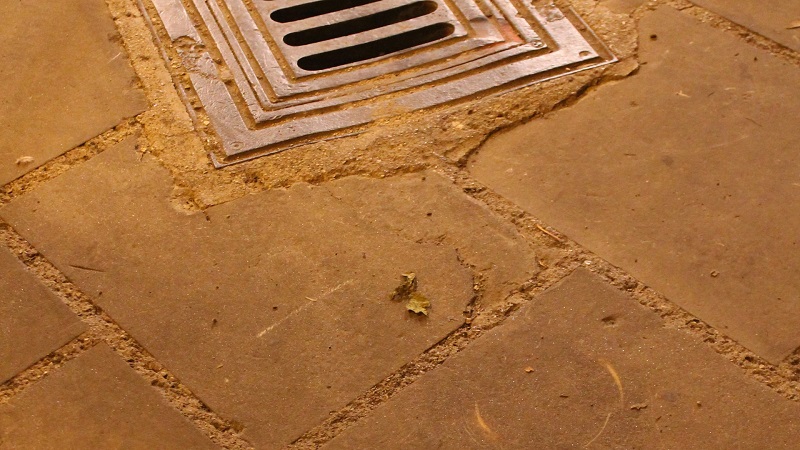
The tarmac and uninterrupted pavements in cities make large expanses of land impermeable.
To avoid the adverse effects of this undesirable process on the environment, the cities most committed to sustainability are developing so-called sustainable urban drainage systems (SuDS), which try to restore the permeability of soils in urban environments through different strategies. Countries such as Australia, with strong incentives for water reuse initiatives, and China, with its “Sponge Cities” program, are firmly committed to developing regulations on the use of domestic “greywater” and rainwater in their urban water management practices.
Large cities like New York, San Francisco, London or Cape Town in South Africa are taking a high profile for creating policies advocating the sustainable treatment of surfaces through filtration, capture and reuse of water. Among other measures, the United Kingdom’s capital has adopted policies that make sustainable drainage systems a mandatory requirement in new urban developments. It has also drafted a guide for policymakers to help design new areas, streets and parks and manage positive measures for the water cycle. Furthermore, the British city is conducting educational programmes for young children at schools to highlight the benefits of safeguarding the water cycle.
One of the principles of sustainable drainage is to try to harvest rainwater as close as possible to where it falls. An innovative resource called “rain gardens” is available to do this. These bounded green areas, which can be completely flooded during heavy rains, harvest significant amounts of water, reducing the risk of flooded sidewalks and roadways, whilst enabling the infiltration of water into the subsoil. To do this, the land’s inclination is taken into account, kerbs and other elements are lowered to improve water flow, and the subsoil is treated to optimise infiltration and recharge capacity. This technique, known as “bioretention”, not only filters the water but also creates wetland habitats that encourage biodiversity.
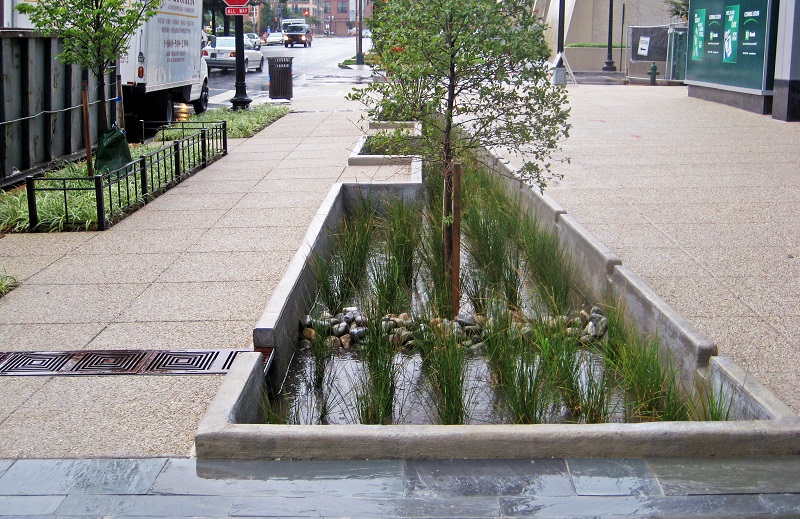
“Bioretention” strips with floodable gardens on Washington, DC’s sidewalks. Photo: DC Green Infrastructure
The mainstreaming of these drainage systems into the cityscape is a crucial development internationally. A case in point is the Bridget Joyce Square in London. This square, next to a school and several playgrounds, had been abandoned and neglected. Today, it has become a major attraction for children and adults, with elements of play and sculptures that leverage the aesthetic opportunities of moving water.
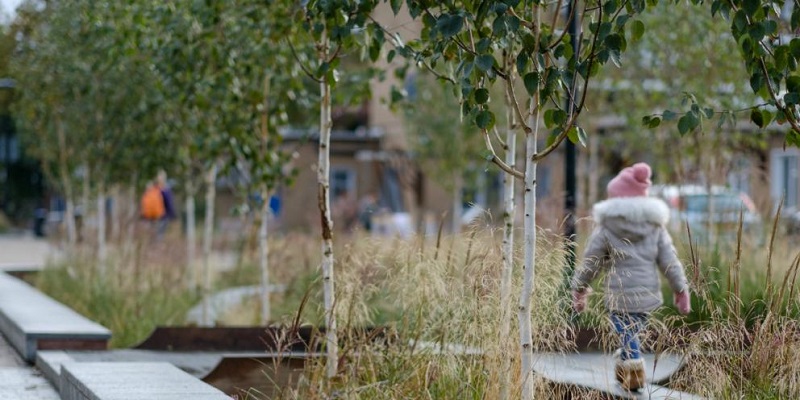
The Bridget Joyce Square in London combines landscaping, entertainment, and sustainable drainage. Photo: london.gov.uk
Apart from garden-based rainwater harvesting systems, another common sustainable drainage technique is the use of porous pavements that enable rainwater infiltration. This technique has been used in the large car parks at Wanda Metropolitano Stadium in Madrid. The porous pavement allows the water to infiltrate the subsoil quickly, thus avoiding being carried over large distances and becoming contaminated. It also enables runoff harvesting from nearby impermeable areas. Water tanks have been placed under the car parks that surround the stadium.
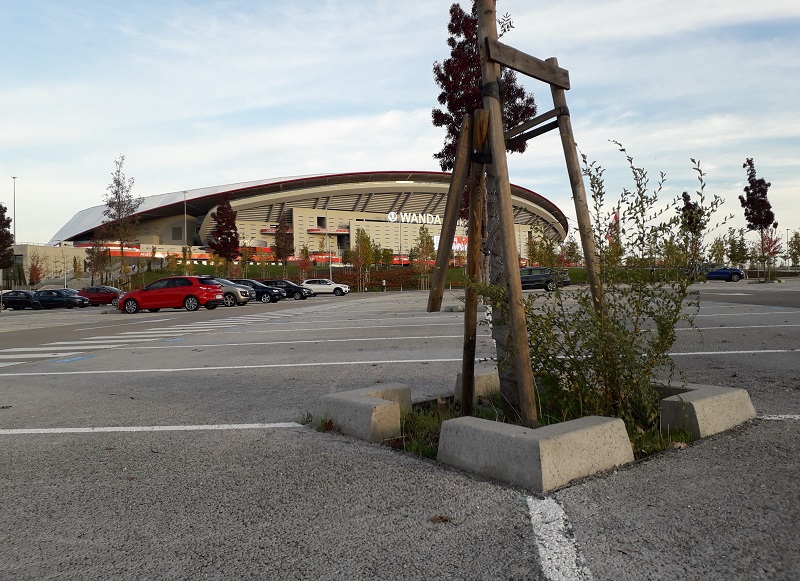
The porous and permeable surfaces of the car parks’ at Wanda Metropolitano Stadium are dotted with tree wells that allow stormwater to be absorbed and channelled to the large underground tanks.
Madrid Nuevo Norte, the large urban transformation project in Madrid, is placing particular focus on water. It includes measures in line with the best international practice to encourage responsible management and consumption at the district level. The project will implement pioneering measures to reuse water and reduce water consumption in urban buildings and infrastructure.
The project includes initiatives such as the reuse of greywater and roof runoff, and rainwater harvesting to irrigate parks and gardens. It is also considering the introduction of sustainable drainage systems, such as porous pavements, to replicate the natural conditions of the terrain under the streets and parks. The infiltration and harvesting of water in public spaces will not only recharge the natural aquifers but also play an essential role in the design of urban spaces and green areas.
Madrid Nuevo Norte’s urban landscape will also include a new reclaimed water network for street cleaning and irrigating public green areas. A smart, sensor-based irrigation system that will detect weather conditions, supplying the plants the water strictly needed at all times.